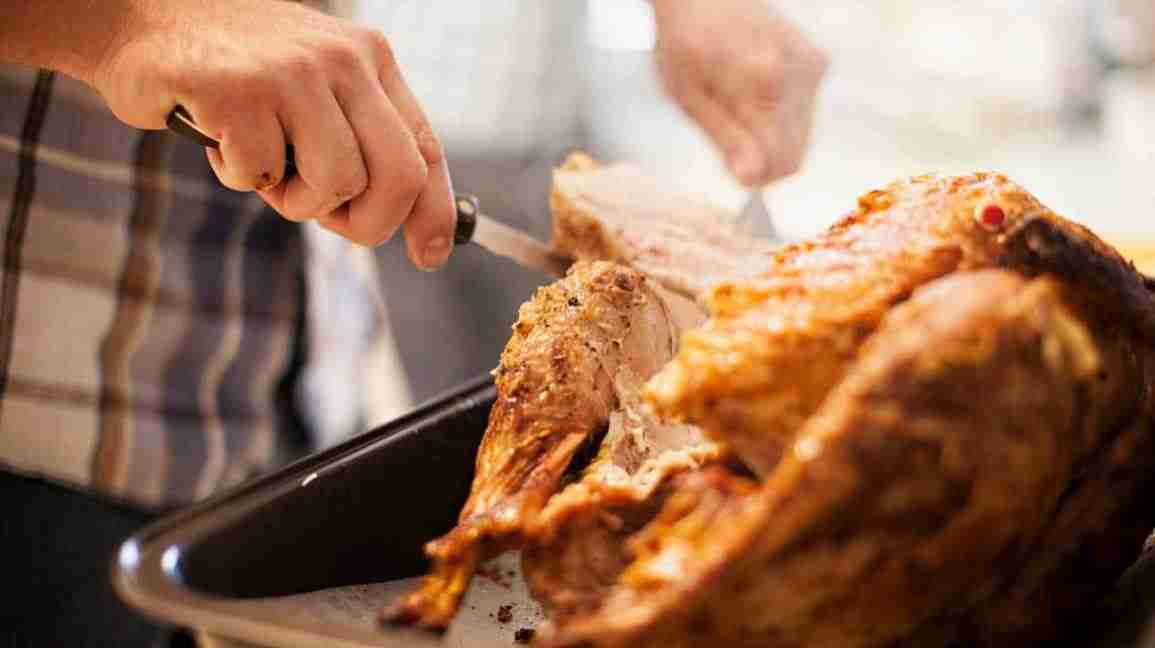The turkey is a large bird native to North America. It’s hunted in the wild, as well as raised on farms.
Its meat is highly nutritious and a popular protein source consumed around the world.
This article tells you all you need to know about turkey, including its nutrition, calories, and how to add it into your diet.
Turkey is rich in nutrients. Two thick slices (84 grams) of turkey contain (
- Calories: 117
- Protein: 24 grams
- Fat: 2 grams
- Carbs: 0 grams
- Niacin (vitamin B3): 61% of the Daily Value (DV)
- Vitamin B6: 49% of the DV
- Vitamin B12: 29% of the DV
- Selenium: 46% of the DV
- Zinc: 12% of the DV
- Sodium: 26% of the DV
- Phosphorous: 28% of the DV
- Choline: 12% of the DV
- Magnesium: 6% of the DV
- Potassium: 4% of the DV
The nutrients in turkey depend on the cut. For example, dark meat, which is found in active muscles such as the legs or thighs, tends to have more fat and calories than white meat — whereas white meat contains slightly more protein (
Furthermore, turkey skin is high in fat. This means that cuts with the skin on have more calories and fat than skinless cuts.
For example, 3.5 ounces (100 grams) of turkey with the skin packs 169 calories and 5.5 grams of fat, whereas the same amount without the skin has 139 calories and just 2 grams of fat (
Keep in mind that the difference in calories is small. What’s more, fat can help you feel full after meals (
SummaryTurkey is rich in protein and an excellent source of many vitamins and minerals, especially B vitamins. Skinless cuts have fewer calories and less fat than those with the skin on.
Turkey has several potential health benefits.
Healthy source of protein
Turkey is a protein-rich food.
Protein is important for muscle growth and maintenance. It gives structure to cells and helps transport nutrients around your body (
Additionally, a high-protein diet may even support weight loss by promoting feelings of fullness (
Just 2 thick slices (84 grams) of turkey pack 24 grams of protein — an impressive 48% of the DV (
What’s more, turkey may be a healthier alternative to red meat, as some observational studies link red meat to an increased risk of colon cancer and heart disease (
However, other studies claim that processed meat — not red meat itself — has a negative effect on health (
Loaded with B vitamins
Turkey meat is a particularly rich source of B vitamins, including B3 (niacin), B6 (pyridoxine), and B12 (cobalamin).
Two thick slices (84 grams) of turkey pack 61% of the DV for vitamin B3, 49% for vitamin B6, and 29% for vitamin B12 (
These B vitamins have many benefits:
-
Vitamin B3 (niacin). This vitamin is important for efficient energy production and cell communication (
15 ). - Vitamin B6 (pyridoxine). This vitamin supports amino acid formation and helps produce neurotransmitters (16).
-
Vitamin B12. B12 is vital for DNA production and the formation of red blood cells (
17 ).
Furthermore, turkey is a good source of folate and vitamins B1 (thiamine) and B2 (riboflavin) (
Rich source of minerals
Turkey is loaded with selenium, zinc, and phosphorus.
Selenium helps your body produce thyroid hormones, which regulate your metabolism and growth rate (
Zinc is an essential mineral needed for many different bodily processes, such as gene expression, protein synthesis, and enzyme reactions (
Finally, phosphorus is vital to bone health (
Additionally, turkey provides small amounts of magnesium and potassium.
SummaryTurkey is a great source of high-quality protein, as well as many B vitamins and several minerals.
Although this meat has many benefits, it’s important to limit processed turkey products, as these items can be loaded with salt.
Processed varieties, such as turkey ham, sausages, and nuggets, may harbor large amounts of salt. Sodium is usually added as either a preservative or flavor enhancer (
Research shows that consuming excess salt may increase your risk of stomach cancer. Conversely, cutting back on your salt intake may reduce high blood pressure (
Some processed turkey products like salami and pastrami hold up to 75% of the DV for sodium per 3.5 ounces (100 grams). The same portion of turkey sausage supplies over 60% of the DV (
In comparison, 3.5 ounces (100 grams) of unprocessed, cooked turkey provides just 31% of the DV for sodium (
Therefore, to minimize your salt intake, choose unprocessed turkey over processed forms.
SummaryProcessed turkey products often pack excessive amounts of salt. To avoid overconsumption, choose unprocessed turkey.
You can include turkey in your diet in endless ways.
Fresh or frozen turkey can be purchased year-round from your local grocery store or butcher shop.
This meat is often roasted in the oven but can also be slow-cooked using a slow-cooker or crock pot until tender.
You can add it to the following dishes:
- Salads. Add it hot or cold to salads as a good protein boost.
- Curries. Turkey can be used instead of chicken in curries.
- Casseroles. This meat works perfectly in casseroles.
- Soups. Not only is turkey meat great in soups, but you can also make your own stock from turkey bones.
- Sandwiches. Combine with your favorite toppings and spreads, such as lettuce, tomato, mustard, or pesto.
- Burgers. Ground turkey can be mixed with stuffing or breadcrumbs to make burger patties.
Turkey can also be bought minced and used to replace ground beef in dishes like spaghetti Bolognese or cottage pie.
As noted above, it’s best to limit your intake of processed turkey products, such as sausages and sandwich meat.
SummaryTurkey is incredibly versatile and can be added to soups, salads, and casseroles. It also makes a great replacement for ground beef.
Turkey is a popular meat that boasts high-quality protein, B vitamins, selenium, zinc, and phosphorus.
It may support various aspects of health, including muscle growth and maintenance, due to its rich supply of nutrients.
However, it’s best to avoid processed varieties, as these are high in salt.
You can easily include this meat in soups, salads, curries, and many other dishes.




